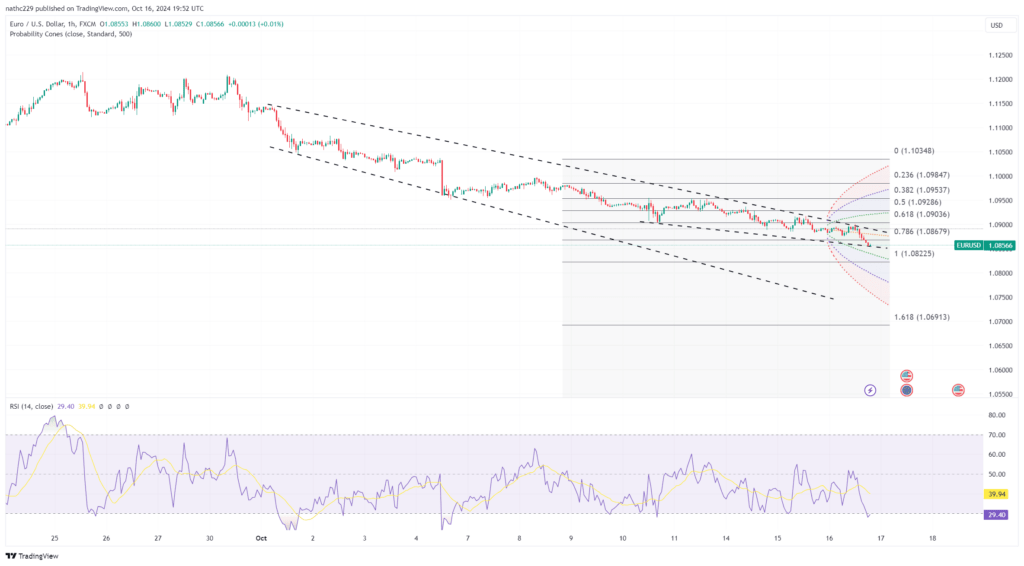
EUR/USD has continued to sink, breaking below key technical levels as traders pare back long positions. After peaking at 1.1214, the pair has dropped to a fresh two-month low of 1.0871, driven by a firming U.S. dollar and rising U.S. Treasury yields. The pair pierced the 200-day moving average (DMA) at 1.0874, reinforcing the bearish outlook as traders reduce long bets that have been in place for nearly two years. The recent failure of EUR/USD to reward long positions has encouraged traders to exit bullish positions, and further downside risks are now in play. A daily close below the 200-DMA would solidify the bearish technical setup and likely attract more selling pressure.
Technically, EUR/USD is showing multiple signs of weakness. The pair is trading below the 5-DMA and daily Ichimoku cloud, with falling Relative Strength Index (RSI) readings confirming downside momentum. The break below the 200-DMA adds further credibility to the bearish scenario, and traders are likely to target the next key support zone at 1.0775-1.0800. This support area could act as a base for EUR/USD, but if selling pressure continues, the pair could experience a deeper decline. The focus will shift to the upcoming Federal Reserve meeting in November, where a likely rate cut could offer some relief for the euro. However, in the near term, the risks remain skewed to the downside.
Looking ahead, EUR/USD is vulnerable to further declines as bearish signals accumulate. The ECB’s recent policy meeting has shifted focus to the Fed, where expectations of a rate cut in November could provide temporary relief for the euro. However, until there is clarity on the Fed’s actions, EUR/USD is likely to remain under pressure. A sustained break below the 1.0800 level could open the door to further downside, with traders likely eyeing the 1.0700 zone as the next significant support. For now, any rallies are expected to face resistance near the 200-DMA at 1.0874, limiting upside potential as bearish momentum takes hold.
